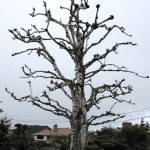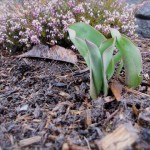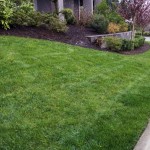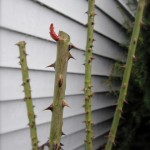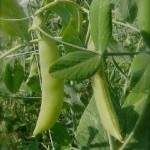Paver patios and walkways
Posted on April 2nd, 2009 by Andy
One of the most requested landscape features we get at Ecoyards are paver patios, walkways and driveways. Pavers offer many benefits over concrete. They come in a variety of rich colors, textures, and styles to fit your landscape design. Pavers are much easier to adjust and repair than concrete slabs that tend to crack over time. 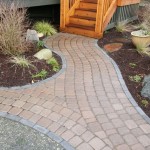 They’re also aesthetically pleasing. Take a look at some of our paver patio and walkway photos.
They’re also aesthetically pleasing. Take a look at some of our paver patio and walkway photos.
At Ecoyards, we’ll work with you to choose the right material for your patio or walkway. We use local suppliers that produce their brick pavers and other materials locally in the Puget Sound area.
To properly install your paver patio or walkway, we excavate the underlying soil and create a base of compacted crushed gravel that’s a minimum of four inches for regular foot traffic and even more for areas where vehicles will be driving over the pavers. A good low-impact tip is to keep the excavated soil on-site rather than transporting it across town as fill material. In some cases the underlying soils can be amended with compost and used in planting beds.
The next step is to place a thin layer of bedding sand, which proves a smooth, level surface for the pavers to sit on. We then set the brick or stone pavers in the style that you like, cutting pavers to fill gaps along the edges. We set edge restraint systems around the perimeter to prevent settling and spreading.
Once the pavers and edging are in place, we compact the pavers down using a vibrating place compactor to ensure that the pavers are set. Voila! Your patio is ready for you to enjoy.
Filed under: Seattle Hardscaping,Seattle Landscape Design | Permalink | No Comments
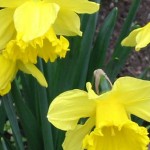 lately. Despite that, daffodils and forsythia are strutting their stuff, tulips are poking through the cold ground, cherry blossoms are in full bloom, and we just noticed some blooming trillium deep in the woods of
lately. Despite that, daffodils and forsythia are strutting their stuff, tulips are poking through the cold ground, cherry blossoms are in full bloom, and we just noticed some blooming trillium deep in the woods of 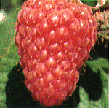 Apply about 3/4 to 1 pound of ammonium sulfate per 100 feet of row. Give blueberries a spring application of a balanced fertilizer such as 5-10-10.
Apply about 3/4 to 1 pound of ammonium sulfate per 100 feet of row. Give blueberries a spring application of a balanced fertilizer such as 5-10-10.
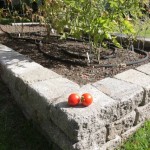 I recommend growing vegetables in raised beds, wherever possible. Your bed could be as simple as a large mounded pile of soil, or as fancy as one made from cedar boards or, as pictured to the left, made from RomanStack blocks. Raised beds help drain water better and warms the soil up quicker so that you can extend your planting season. It helps keep weeds out of the bed, and prevents your soil from becoming too compacted from excess foot traffic. Ecoyards has made several lovely raised beds for clients, including the one pictured at left.
I recommend growing vegetables in raised beds, wherever possible. Your bed could be as simple as a large mounded pile of soil, or as fancy as one made from cedar boards or, as pictured to the left, made from RomanStack blocks. Raised beds help drain water better and warms the soil up quicker so that you can extend your planting season. It helps keep weeds out of the bed, and prevents your soil from becoming too compacted from excess foot traffic. Ecoyards has made several lovely raised beds for clients, including the one pictured at left.